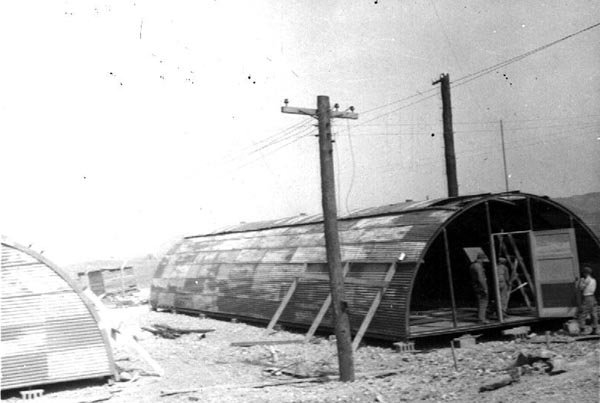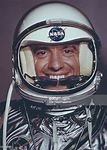Byron Terry
Byron Terry, Canton, TX, U.S. Army and U.S. Air Force
Byron Terry is 89 years old and was born in Hope, Arkansas on September 11th, 1929. He had two brothers and one served in Germany with him.
“As a kid growing up on a farm in Hope, Arkansas. We lived about seven miles from town. My dad worked for 50 cents a day. When the war came they bumped up the minimum wage to 40 cents an hour. When we went to town we travelled in a horse and wagon. We grew cotton, corn and other vegetables. My dad had five brothers and two sisters. He had about a hundred acres we farmed. About eighty percent of what we ate on the farm was vegetables with very little meat. We had no electricity or refrigeration back then. We didn’t get electric power until about the 1940s. I lived during the Depression. I got one pair of shoes a year and rode on a school bus for about 10 miles. We wore a lot of overalls back then,” recalled Byron of his earlier years.
“Jonah was my father and Jewell was my mother’s name,” said Byron. “My dad was a farmer until WWII came along in 1941. He became a carpenter working in all these Army camps building tents and barracks for the soldiers. We travelled in many states during this time. I went to different schools all around the country. We were in Detroit, Michigan when I was 13 years old and graduated from the sixth grade. That was the last time I went to school. I made it on my own. My lack of education never stood in the way and I never let it affect me,” he said.
The family moved from Detroit down to New Orleans, Louisiana. “My dad was still building homes for the Army,” said Byron. “I got my social security card when I was 14 years old and got a job on a boat called the S.S. Roosevelt. It was a pleasure boat and not the military type. We rode up and down the Mississippi with dancing and live music. We took two trips a day for about a two-hour tour. There were a lot of Navy personal in New Orleans during this time. We served beer on the boat but I was only 14 years old. I worked on the boat for about two years. From there we moved back to Arkansas.”
Volunteering for the Military
“On September 18th my mom signed for me and I joined the military in Little Rock, Arkansas. I was 17 years old. I volunteered for the Army. I saw all those military people in New Orleans and just wanted to do my part. I went to boot camp in Anniston, Alabama at Ft. McClellan,” said Byron sitting up on his bed at the retirement home in Canton.
In the early 1940’s, around $6.5 Million in Federal funding was given to Fort McClellan to do major upgrades and extended the land use to over 22,000 acres. The Fort did become a short-term home for captured enemy soldiers. After WW2, the installation was put on an inactive status. Fort McClellan was home for an average of 15,000 people and employed about 1,500 civilians. The base was closed in 1995 after the Base Realignment and closure voted to close it down. As of today, the Fort is currently occupied by the Mountain Longleaf National Wildlife Refuge.
“From there they sent me to Japan in December 1946. The Japanese people were real, real nice. They didn’t have much to eat, they didn’t have much of anything. I was in Osaka, south of Japan. I was there for 16 months. I was a machine gunner in the 25th Division, 27th Infantry Regiment. A 30-caliber light machine gunner. We lived in a four-man tent. The war was over but we did a lot of maneuvers and exercises on the island. We were in the occupation of Japan. From 1946-1948 and I came back to the states and got discharged,” according to Byron.
Re-enlisted into the Army
Byron was out for about four months and he and his cousin re-enlisted in the Army. “In 1948 I went back to Japan. I liked everything about that country. I liked the people. They were really nice and courteous to me. They always bowed and you get used to it. The second time I went over I stayed for 39-months. I was stationed close to Tokyo at an anti-aircraft artillery base. We were close to Johnson Air Force Base.”
After the end of the war the military on Okinawa was moved to Japan and was established at Irumagawa on 25 September 1945. The base was renamed Johnson Air Base in honor of Lieutenant Colonel Gerald R. Johnson, the former commander of the USAAF 49th Fighter Group.
“The Korean War had started while I was stationed in Japan. The Army sent me to the International Morris Code School while I was there. We weren’t really busy until the Korean War cranked up. There was only two of us who knew the Morris Code. The other decoder was from California. He worked 12 hours at night and I worked 12 hours during the day. We did this for about eight months before we got in replacements. A lot of the service people who had not been in Japan very long were sent over to Korea. After my replacement came I was sent back to the states. I spent about five years in Japan all together. The Army then sent me to North Camp Polk in Louisiana. I was a communications sergeant there,” said Byron.
“In 1951 I met my wife, Joyce, in Hope, Arkansas. We have been married for 67 years. We only knew each for about four months before we got married. She was 18 and I was 22. I was still stationed in Camp Polk, Louisiana.”
Once again Byron was given orders, this time to Germany. “My wife stayed in Hope, Ark. We had our first son and after four months she came to Germany with me. At this time, I was a staff Sargant, a noncommissioned officer they called them. We stayed with a German family for about eight months until we got government quarters. Our daughter was born in Heidelberg, Germany. I was in the 2nd Armored Division. That used to be General Patton’s outfit in Germany. I was the communications Sargant. We did a lot of maneuvers all over Germany. The best thing I liked about Germany was the BEER. I loved the beer. In Germany beer contained 18% alcohol. It doesn’t take many of them to get you drunk. The first time I drank four bottles of beer I was drunker than someone down in Louisiana. FOUR bottles of beer. Warm beer, no cold beer,” Byron said with a big smile on his face.
His brother, Bobby (86) was in the Air Force for four years, and stationed in Frankfurt Germany. “He was an International Morris Code operator, like me,” said Byron.
“We were about 50 km (30 miles) apart from each other. We spent a lot of times together in the bars and restaurants all over in Germany. The food was great, both on and off the base. I liked the Autobahn in Germany. It went from one end of the country to the other. You could go a hundred miles an hour, there were no speed limits.” How fast did you go? “Oh, I only went about 60 or 70 there. I was used to the United States,” laughed Byron.
Enlisted into the Air Force
In 1955 Byron finished his tour in Germany and came back to the states. “I got out of the Army and was going to be a civilian. This time I enlisted in the Air Force. They knocked me down one rank to a Buck Sargent. I went to tech school in South Dakota and then was transferred to Sumpter, South Carolina. I wanted to be an International Maintenance Man for the telephone companies. It was really a tough job. My third child, a daughter, was born there. I was working in a telephone office. All we did was paperwork. I then got orders to go to Korea.”
Byron travelled to Korea and his wife went back to Hope, Arkansas for a second time. “I went to Korea and stayed a year. A place called Osan Air Base, (K55). I worked at the air control center. I took care of the communications. The war was over but the North Koreans came down from the 38th Parallel. It was a Cold War going on between us.”
Osan Air Base is one of two major airfields operated by the U.S. in Korea and the only USAF facility in the Republic of Korea entirely planned and built by the U.S. Military from scratch during the Korean War.
Osan is located just 48 miles south of the Korean DMZ. It’s home to the “Mustangs” of the 51st Fighter Wing and 24 tenant units, including the Seventh Air Force.
“I was stationed there for a year and I came back to Gray Air Force Base near Fort Hood,” said Byron. “Man, I moved around a lot.”
During the beginning of the cold war, Killeen Base was one of the Air Force’s storage-and-assembly bases for nuclear weapons. From 1952-1969, the airfield and facilities were run by the Army under the Defense Atomic Support Agency. It became part of Ft. Hood in 1969.
“We had three gates to go thru. I did not know what this base was before I got there. I soon found out it was an Atomic Bomb storage facility. That was a spooky thing. They put me and a civilian running a telephone exchange. This was inside the communications equipment.” (Mr. Terry cut off the conversation there as we started to enter a highly classified operation). “We did the maintenance and the cleaning on the communications equipment. I spent about two years near Ft. Hood.”
Working on the Space Shuttle
Byron’s next assignment was Cocoa Beach, Florida, at Cape Canaveral. “They needed a communications expert so I was sent. Alan B. Shepard was an astronaut working there at the time. I had seven Air Force techs and seven civilians working for me. We all worked on Mercury, Pad 31 at the Cape,” said Byron proudly.
In 1961 Alan Shepard became the first American to travel into space, and in 1971 he walked on the moon. He was selected as one of the original NASA Mercury Seven astronauts in 1959, and in May 1961 he made the first manned Project Mercury flights, in a spacecraft he named Freedom 7. He became the second person, and the first American, to travel into space, and the first space traveler to manually control the orientation of his craft. At age 47, he became the oldest person to walk on the moon and the only one of the Mercury Seven astronauts to do so.
“We installed all the communications in the space shuttle. The space capsule that John Glenn sat in. HAM was the space monkey we shot up in space,” said Byron looking up at the ceiling.
On January 31, 1961 Ham the Chimp was launched from the Cape Canaveral space center on a 17 minutes long suborbital flight. During that time, he reached the altitude of 157 miles, at a speed of 5857 mph, and had six minutes of weightlessness. Ham preformed perfectly, responding to the blue lights as intended. During his return his capsule suffered a loss of atmosphere but his special space suit saved his life. Success of this mission paved the way for the successful launch of Alan Shepard’s first American human manned mission on May 5, 1961.
Final stop, Turkey
“I went from Cape Canaveral to the country of Turkey near their border. There we set up direct communication lines to Washington D.C. I could not take my family over there with me due to U.S. travel restrictions. When my time was up I got out. I gave the military 17 years of my life. I would have stayed 20 if the military would have allowed my family to come over to Turkey with me,” said Byron with a sigh.
From Turkey, Byron moved his family to Dallas, Texas. “My parents lived in DFW at the time. My wife worked for Reserve Life Insurance Company and I worked for a company making seismograph machines,” recalled Byron.
“My fondest job in the military was the Alan B. Shephard job down in Cape Canaveral. That monkey lived for about 38 years after we shot him up in space. HAM the monkey was so scared. He was jumping all over the place,” Byron said laughing.
“The Air Force was more challenging for me than the Army. I was in during the missile deal and the atomic bomb storage area. The Army was more disciplined and stricter and more military than the Air Force. The worst part of the military was being married and being away from your family. I learned to be disciplined in the military and learned to just be nice to everyone.”
Van Zandt County
“We spent about 15 years in Dallas and then moved to Canton in Van Zandt County. When I lived in Dallas I started raising Herb plants. I started selling to the nursery’s there. When I moved to Canton we had 20 green houses. I raised Herbs because there was more money to be made. Twenty-five or thirty years ago there were smaller farms, fruit stands and nurseries. Those are where I sold all my herbs to. I wholesaled out to all these small individual nurseries and they retailed them to the customers.
We grew just about any kind of herb you could think of. Basil, French Tarragon, Thyme, Parsleys, Rosemary. We sold about 75 varieties. My number one herb was Basil.
Always has been. I was in the commercial Herb business for about 50 years. Terry’s Herb Plant Market was the name of the business. I closed it down two years ago. My wife was in the rest home and I wanted to come and be with her and spend the rest of our lives together. We’ve been married 67 years, so we need to spend the rest of our time together,” said Byron looking over at the bed next to his.
Secret to Long Life
“I ate all those good vegetables is probably why I am 89 and still have a pretty sharp mind. I think the Army and the Air Force helped too. If I had to do it all over, I would do the same thing and live it all again. I wouldn’t change a nickel,” Byron’s voice started to crack, “I am 89 and I am still kicking. It has been a good life.”
Byron Terry is a self-made man, who received his PhD in a hard work ethic and common sense.
Thank you, Byron, for your service to our country, in both the Army and the U.S. Air Force.
GOD BLESS OUR MILITARY AND GOD BLESS AMERICA
NOTE: Meet other Veterans from Van Zandt County by going to the top of this page and click on MEET OUR VETERANS and click one of the (5) branches of services and the veterans last name first and click to read.
“Every Veteran has a story to tell.” Phil Smith
(ALL photos on this Facebook page are ©2019, Phil Smith and Van Zandt County Veterans Memorial. NO unauthorized use without permission) All Rights Reserved









